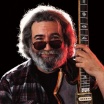Beatniks, Hippies, Artists and Stars
Certain creative types made names for themselves in post-war America as rebels against the status quo. With all-American war hero Dwight Eisenhower in the White House, these cultural expatriates discovered each other in San Francisco or New York’s Greenwich Village, experimented with drugs and alternative lifestyles — and sometimes published works of great renown. Here are a few of these legends of the American counterculture.

JACK KEROUAC‘s 1957 book On the Road remains a counterculture cornerstone. Kerouac typed the novel during three marathon weeks in 1951, then struggled for six years to get it published. The book recounts Kerouac’s cross-country ramble with fellow drifter Neal Cassady and their encounters with hoboes, junkies and other mainstream dropouts. The manuscript for On the Road, typed onto strips of paper pasted together into one long scroll, was sold at auction in May 2001 for $2.2 million.

One Flew Over the Cuckoo’s Nest author KEN KESEY also traveled cross-country with Neal Cassady. In 1964 the two men and other “Merry Pranksters” boarded an old schoolbus painted in psychedelic colors and drove from California to New York to celebrate the publication of Kesey’s second novel, Sometimes a Great Notion. They named the bus Further and along the way they made friends, threw parties, performed impromptu rock concerts and experimented with LSD. The trip was immortalized by Tom Wolfe in his book The Electric Kool-Aid Acid Test.

Ken Kesey was a fan and patron of a San Francisco band called The Warlocks. The band was later renamed the Grateful Dead and its leader, JERRY GARCIA, became an enduring star. As years went by the Grateful Dead’s perpetual concert tours (featuring Garcia’s famously long-winded guitar solos) became a magnet for aging hippies and for youngsters who wanted to relive the tie-dyed splendor of the 1960s. By Garcia’s death in 1995, the Grateful Dead had somehow made the counterculture into big business, ranking annually as one of the world’s top-grossing concert acts.

WILLIAM S. BURROUGHS was a little too creepy to become a lovable public figure like Kesey or Garcia. Burroughs’s landmark 1959 novel Naked Lunch was the product of his own troubled life as an addict and offered so much drug talk that Burroughs included a glossary of terms. Still, the novel’s shocking details and social satire made Burroughs a counterculture guru. At the end of his life he returned to his midwestern roots, settling in Kansas until a heart attack killed him in 1997.

Naked Lunch, On the Road and the poem Howl form the grand triad of 1950s counterculture literature. ALLEN GINSBERG, the author of Howl, attended Columbia University in the 1940s; in New York City he met Kerouac, Burroughs and other radical authors. Together they became known as the “Beats.” In the 1960s Ginsberg moved to San Francisco, became chums with Kesey and influenced next-wave artists like Bob Dylan.

TIMOTHY LEARY coined one of the best-remembered phrases of the 1960s: “Turn on. Tune in. Drop out.” As a psychologist working at Harvard, Leary studied LSD’s effect on volunteers; after the drug was made illegal he continued to publicly celebrate its mind-altering effects. Leary was arrested in 1972 for possession of marijuana and briefly fled the country, but by then he had become so famous for his radical views that President Richard M. Nixon had called him “the most dangerous man in America.”
RICHARD BRAUTIGAN made his literary reputation in San Francisco in the 1960s with poems, short stories and novels.Trout Fishing in America, his satirical look at the condition of the environment, was written in 1961, but not published until 1967. It became a national bestseller and a manifesto of sorts across college campuses, and assured Brautigan a place in literature amid the Beats and the Hippies. His other works include the novels A Confederate General From Big Sur (1964) and In Watermelon Sugar (1968), four volumes of poetry and a short story collection, Revenge of the Lawn: Stories, 1962-1970 (1971).
EDWARD ABBEY grew up on a Pennsylvania farm and studied at the University of New Mexico before going to work for the National Park Service. In his nonfiction account of his time in Utah, Abbey reflected on the beauty of the desert and the damage done to it by humans. The book, Desert Solitaire, was published in 1968 and eventually became an honored guide for the environmental movement. His other best known work is the novel The Monkey Wrench Gang (1975), a rallying cry for activists who abhor the negative effects of industrialization.
